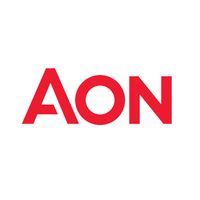Marrying robo-advice with flexible benefits

Wearable devices that measure how many calories you burn each day, personal apps that organise finances, debts, investments etc are a mine of data that could help form a better picture of employees’ attitudes and motivations.
If the wealth of data on employee pay, benefits and savings held by employers and their providers can be combined with the information from some of these groundbreaking personal apps, then the potential for targeted communications becomes highly interesting. One approach is to identify 5-6 core attitudes among employees and then target communications around that.
One of the first steps towards achieving this integration is an app that offers employees access to the full range of their benefits and choices. We have already developed such an app, but other providers will certainly follow suit.
The goal is to build a set of information on each employee that enables targeted paternalistic nudges, offers or solutions with pinpoint accuracy. Perhaps the biggest win is for wellbeing improvements to cut absence rates, PMI claims and overall engagement in the workplace.
The targeting can be done automatically from a computer programme, which is why the idea of such integrated solutions gets the term robo-advice.
Beyond mental, social, physical wellbeing, such advice could be used for guidance on pension saving or debt management. Curiously, this would appear to offer the ability to reintroduce a measure of paternalism into pension saving that has been receding for years with the demise of defined benefit schemes.
For more short-term financial matters, nudges could come from being able to view spending patterns on utility bills that would enable the suggestion of alternative providers, potentially saving the employee a stated sum from their quarterly bills. Targeted discounts could be learnt from an employee’s spending patterns.
Demonstrable wins
Such demonstrable wins for employees could help overcome any anxiety at others having access to a wide array of data, while using an external provider to provide this service gives employees a level of confidence that their employer is not getting access to very personal information.
Such a combination of data recognises the limits of flexible benefits plans. Employers can try offering some generic versions of the popular self-help apps through their platforms, but these are unlikely to have anywhere near the traction of the viral apps and devices offered by specialist providers.
The fast pace of change in digital technology also means there are widening number of useful health and financial wellbeing apps not yet invented with which an employer may choose to take advantage of. In addition, trying to offer everything through a benefits platform is going to push the cost of it through the roof.
The possibilities are game changing and are already influencing our work with clients. In a recent conversation with one, which has a high proportion of employees aged over 50 and concerns about how health impacts productivity we highlighted that the spend employers make on targeted nudges and incentives could see potential return on investment.
And that’s always a good conversation.
Jon Bryant is director at Aon Employee Benefits.
This article was provided by Aon Employee Benefits.







